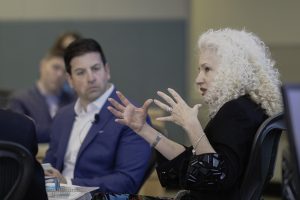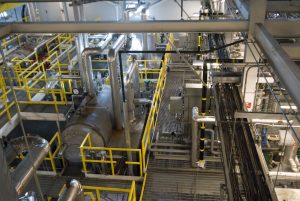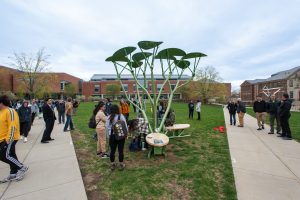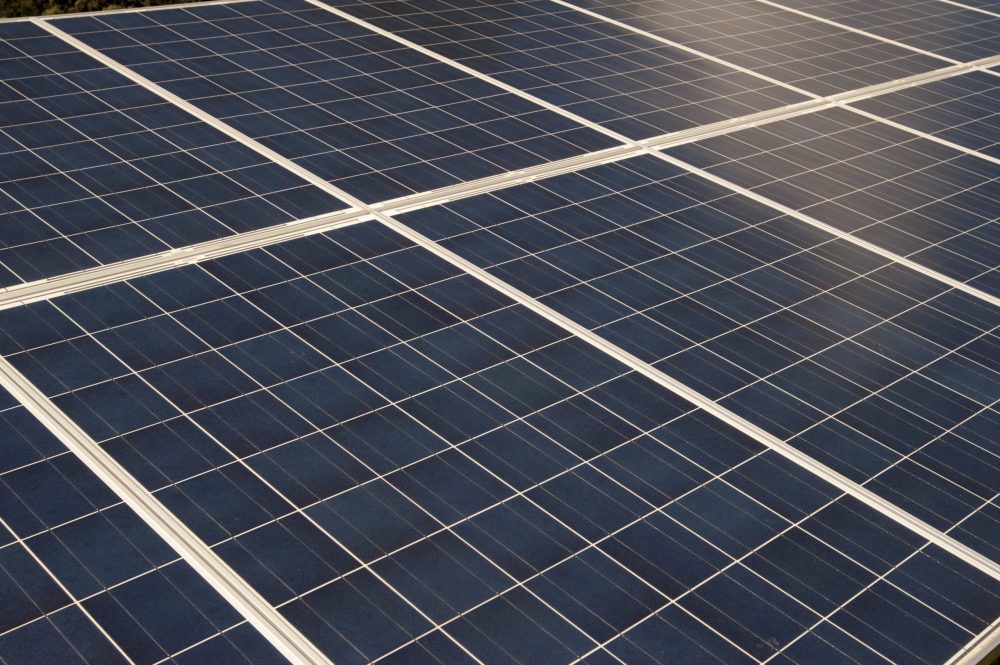The University of Connecticut has a smaller carbon footprint that it did 20 years ago, thanks to long-term investments and its own power plant. Now the University is hunting for ways to shrink that footprint even more.
The University’s campus in Storrs has added about a million square feet of buildings over the last two decades. Despite that, peak power consumption has plummeted from as high as 45MW in 2005 to only 27.4MW during last year’s September heatwave, thanks to efficiency measures the University adopted over the intervening 18 years.
But now electric demand is increasing as the campus grows, and the University is seeking ways to meet its needs for heat and power in more sustainable ways. It has multiple proposals from both Facilities Operations and from a student competition organized by the Eversource Energy Center.

Facilities has suggested two different proposals. The first would add two hydrogen-capable turbines to the cogeneration UConn runs for electricity and steam heat on the Storrs campus, increasing the total rating to 50MW. The existing three turbines are being retrofit to handle up to 30% hydrogen. The original cogeneration plant was built in 2006 and is fairly efficient—much more so than power from the general grid—but its expansion would have UConn continue to depend on natural gas, eventually blended with hydrogen. Facilities’ second proposal would add a connection to the grid via Eversource’s East-West line, which derives most of its electricity from the Killingly natural gas plant and a smaller portion from the Millstone nuclear plant.
The student proposals are less conventional. They were submitted in response to a competition held by UConn’s Eversource Energy Center last fall for students to propose sustainable energy projects on a campus, state, or regional scale. The competition will be an annual event, according to Eversource Energy Center Director Emmanouil Anagnostou.
A joint committee of UConn faculty and Eversource executives picked the winning project, solar panel-covered carports proposed by undergraduates Pranavi Rebala ’25 (CLAS) and Austin Gelinas ’25 (ENG).
After looking at several different options, Rebala, an undergraduate economics major, and Gelinas, in engineering, decided that modular solar panel-covered carports made the most sense for UConn. The solar panels would be placed on roofs over existing parking lots and paired with batteries to store the energy for times of high demand on campus. Net metering, which is when the utility gives the owner of the solar panels full credit for every kilowatt they produce (so if you produce as much power as you use, it nets out to zero—and if you produce more than you use, you get paid for it) would lower the cost of the project. And putting the solar panels on parking lots as close as possible to UConn’s substation would mean little of the electricity would be wasted in transmission.

Rebala and Gelinas got ultra specific in their analysis to give precise cost estimates.
“We picked a specific solar module, specific inverters. We modeled it over a 25-year period, changing variables to see which tilt would be most efficient, which capital costs would be most efficient,” Gelinas says.
“With solar, there is cash flow, we do see positive revenue. We will eventually see profit from it,” Rebala says.
Solar canopies over parking lots were also proposed by Kevin Howson ’16 (CLAS, SFA) ’24 MS, Julie Sandberg ’25 MS, and Jacob Tyler ’24 MS, all graduate students in the Masters in Energy and Environmental Management program. Their analysis found that the most cost effective way to make a dent in the University’s power needs would be to partner with a developer to build a large solar canopy. The developer would fund the construction; the University would commit to purchasing the power generated by the canopy over a set period of time. To allow the developer to claim certain other benefits that would make the project more financially viable, the team suggested applying for Connecticut’s Non-Residential Renewable Energy Solutions program.
Increasing solar capacity was also the focus of graduate students Kexin Song ’25 Ph.D., Haoyi Wang ’26 Ph.D., and undergraduate Paul Zambrzycki’s ’24 (ENG) project. But instead of proposing specific solar installations, Song, Wang, and Zambrzycki zoomed out, looking at the current solar generation capacity of the nearby towns Willimantic and West Hartford. They predicted how solar capacity might be increased intelligently to increase the sustainability of the power supply in those areas without straining the grid.
“When you install too many solar panels in one area, they generate too much power and raise the grid voltage too high,” Wang says. His research focuses on grid topology. “We need to build in resiliency,” he says.
The team had looked at existing maps of solar panels in Connecticut and found them inaccurate and out of date. Song’s research uses remote sensing data to pick out interesting details from publicly available aerial imagery, and she thought they could improve the solar maps. So, the team created a map of the actual solar coverage, and then predicted future growth of solar generation based on income, irradiance, and the capacity of the grid to handle more at specific locations.
“Our project can create a tool to better connect suppliers and customers and maintain the resilience of the system while pushing more clean energy,” Song says. Their map can be updated regularly, and Eversource expressed interest in maintaining it as a useful tool.

Three other proposals were also finalists in the competition. Undergraduates Kevon Rattigan ’25 (CLAS), Malik Francis ’24 (ENG), and Malachi Denton ’24 (ENG) researched the options and found hydrogen fuel cells intriguing. They proposed putting hydrogen fuel cells on the roofs of buildings such as Pharmacy that need lots of electricity, 24 hours a day. Fuel cells would provide baseload energy, reducing the amount the buildings would demand from the cogeneration plant.
“Fuel cells on top of buildings would reduce the footprint. We also discussed using heat from fuel cells to provide heat for buildings,” similar to how the cogeneration natural gas plant produces steam heat now, Francis says.
A grassroots effort was key to the multi-pronged strategy proposed by another team, engineering students Dev Barochia ’25 (ENG), Hasan Nikkhah ’27 Ph.D. and Francesco Rouhana ’25 (ENG). One part of their proposal displayed the energy consumption of UConn buildings on the screen of the TV in the buildings’ lobbies, and asked questions to see if people were aware of the buildings’ environmental footprints. They surveyed students and staff at UConn to find out what people wanted, and were willing, to do in order to decrease UConn’s power consumption.
The second part of their proposal would increase UConn’s power generation using homegrown resources.
“We proposed an anaerobic digester, converting animal waste and wastewater sludge into biogas and electricity,” says Rouhana. The team calculated they could get an additional megawatt of power into UConn’s grid that way and produce saleable fertilizer as a byproduct. And the results of their survey suggested the UConn community would relish the opportunity to compete to lower their building’s energy consumption.
The sixth team also proposed an anaerobic digester and cross-campus competition to reduce energy usage. Teammates Anietie Williams, a chemistry doctoral candidate, and Faith Wariri, a computer science and engineering doctoral candidate, were taken aback by the Eversource data showing UConn’s energy usage month by month, because it was uniformly high, even as Connecticut’s climate varies enormously—and many of the buildings appeared unoccupied during the summer.
“Obviously there is some low-hanging fruit where energy use could be optimized,” Wariri says.
Both teams that investigated it suggested the campus community could be mobilized to reduce energy consumption significantly.
UConn’s Eversource Energy Center plans to host student-led seminars this spring to discuss the grid, decarbonization, and sustainability. Students who submitted the sustainability proposals last year will be invited to share their experience and advice with prospective teams. This year’s challenge will focus on clean energy challenges at the level of town and community.
And the benefits of the competition should eventually extend even further, starting with Wariri and Williams. Although their proposal was not funded, the team intends to pursue it back home in Nigeria. Large sections of the countryside there are not connected to the wider power grid.
In Nigeria, “most agricultural residues and livestock wastes are either incinerated, leading to pollution, or dumped, leading to poorly managed landfills. I think that if this is properly managed, we could have biomass as a major source of energy and thus solve our energy problems,” Williams says.



